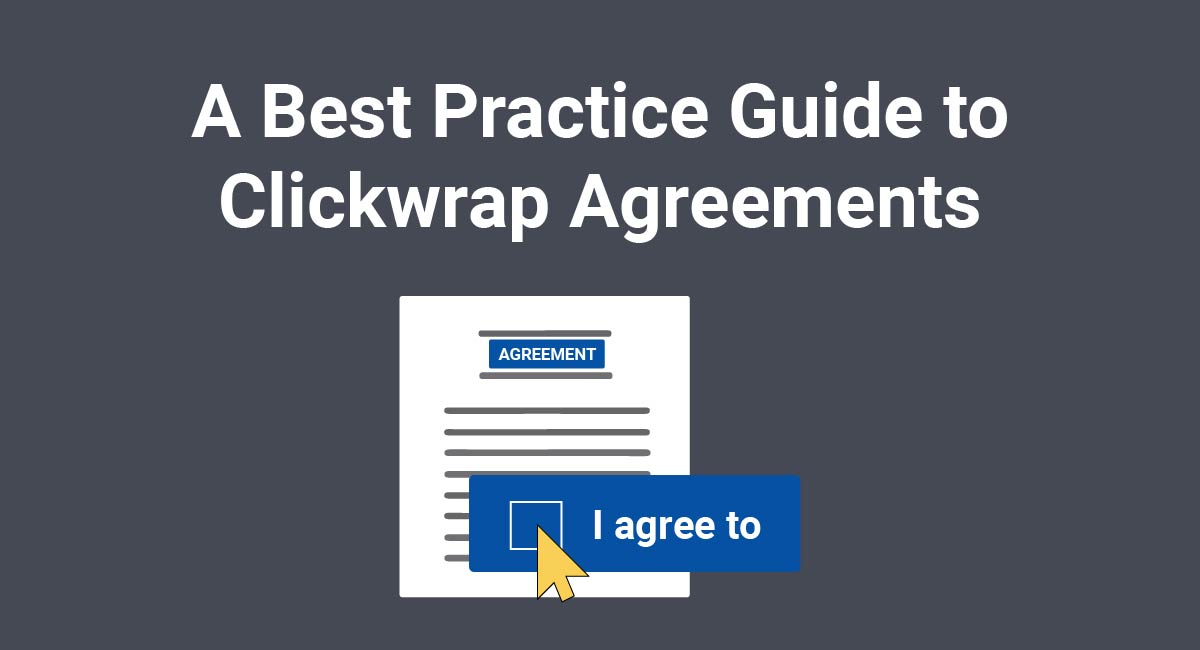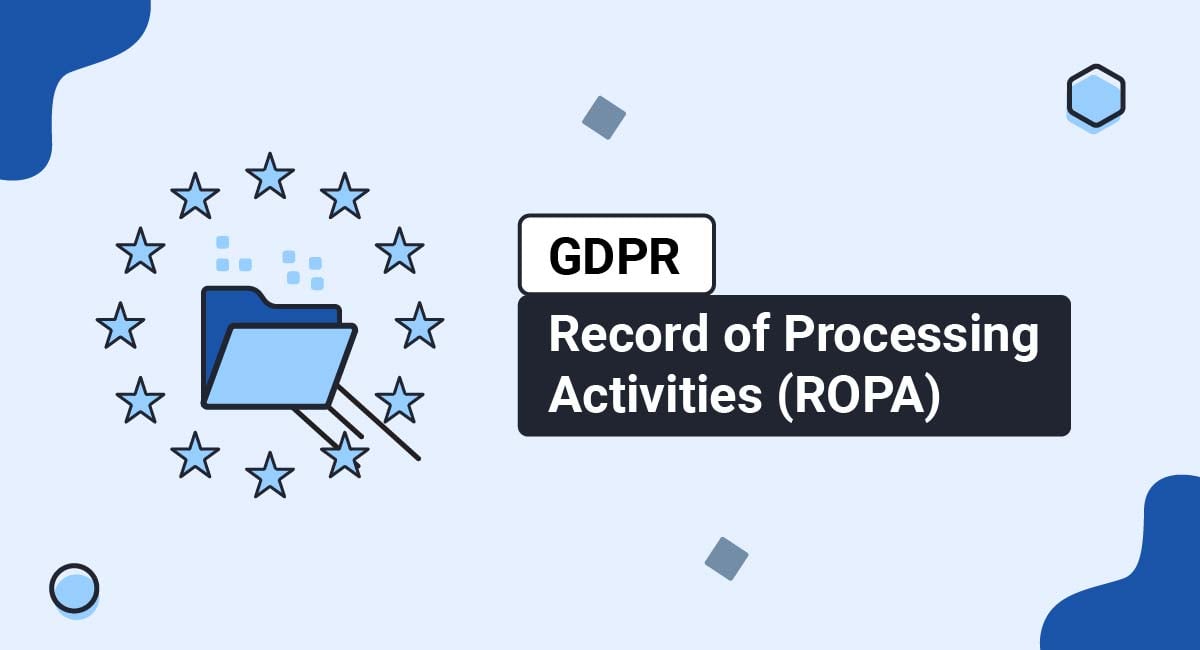Whether your business provides digital or physical subscription products, it's important to make sure that your customers are aware of their rights and the rules they need to follow when using your subscription services. A Master Subscription Agreement can help explain to users what they need to know in order to use your services, as well as help to provide legal protection for your business.
This article will take you through what a Master Subscription Agreement is, whether it's legally required, and how to create, display, and get agreement to your Master Subscription Agreement.
TermsFeed is the world's leading generator of legal agreements for websites and apps. With TermsFeed, you can generate:
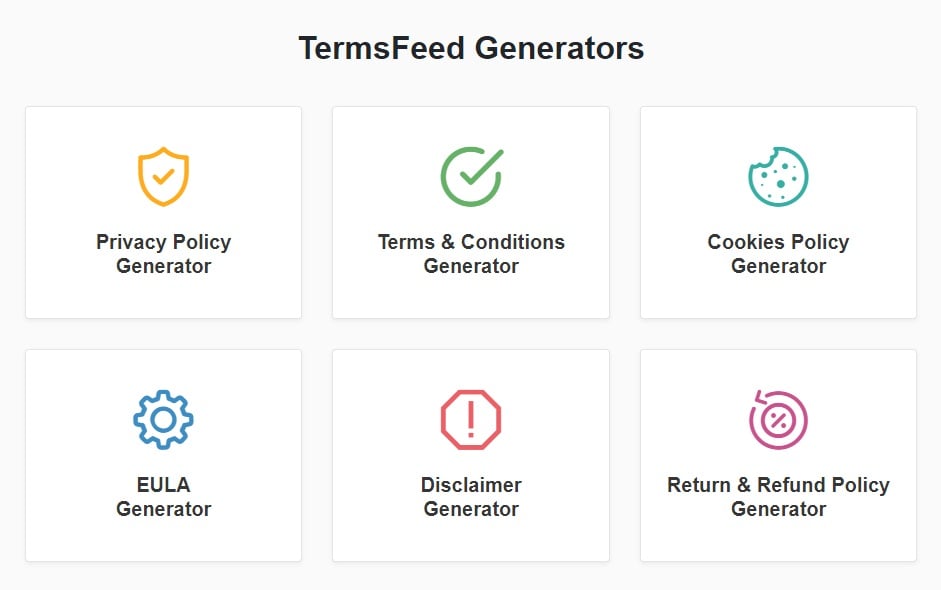
- 1. What is a Master Subscription Agreement?
- 2. Is a Master Subscription Agreement Required?
- 3. How to Create a Master Subscription Agreement
- 3.1. User Requirements
- 3.2. Payment Information
- 3.3. Privacy and Security
- 3.4. Licensing Information
- 3.5. Third Party Information
- 3.6. Intellectual Property
- 3.7. Termination Information
- 3.8. Limitation of Liability
- 3.9. Disclaimer of Warranties
- 3.10. Free Trial Information
- 4. How to Display a Master Subscription Agreement
- 5. Getting Consent to Your Master Subscription Agreement
- 6. Summary
What is a Master Subscription Agreement?
A Master Subscription Agreement is a document that contains all of the information that users need to understand and agree to in order to use your subscription services. It is similar to a Terms and Conditions agreement, but written specifically for those who subscribe to your services.
Your Master Subscription Agreement should include clauses concerning payment information, the rules for users' behavior when using your services, and details about how users' personal information is handled, among other information.
Is a Master Subscription Agreement Required?

While businesses offering subscription services aren't necessarily legally required to maintain a Master Subscription Agreement on their websites, doing so comes with a number of important and great benefits. So while you may not legally need one, you'll still want one anyway.
Some of the benefits that come with having a Master Subscription Agreement include but aren't limited to the following:
- Your users will be informed about what they must do (and not do) when using your service.
- You can limit your legal liability by including appropriate clauses
- You can share important information with users so that they don't need to contact you all the time to ask, such as information about canceling the subscription or updating payment methods.
How to Create a Master Subscription Agreement

Your Master Subscription Agreement needs to include all pertinent information that users need to be aware of and agree to before signing up for your subscription services.
A Master Subscription Agreement contains clauses that inform users about their rights and responsibilities when using your services, lets them know how you keep their personal information safe, and explains your payment processes, among other details.
The table of contents of Redocly's Subscription Agreement contains all the information users need to know in order to use its services, including sections explaining payment terms, users' responsibilities when using its software, and compliance measures and confidentiality:

When writing your own Master Subscription Agreement, you should consider including the following clauses.
User Requirements
A user requirements clause describes how users must behave in order to use your subscription services. It can cover expected behavior when communicating with other users (if applicable) as well as go over software use restrictions.
Masthead's Data Master Subscription Agreement contains a Use of Service clause that explains the rules that consumers must follow in order to use its services:
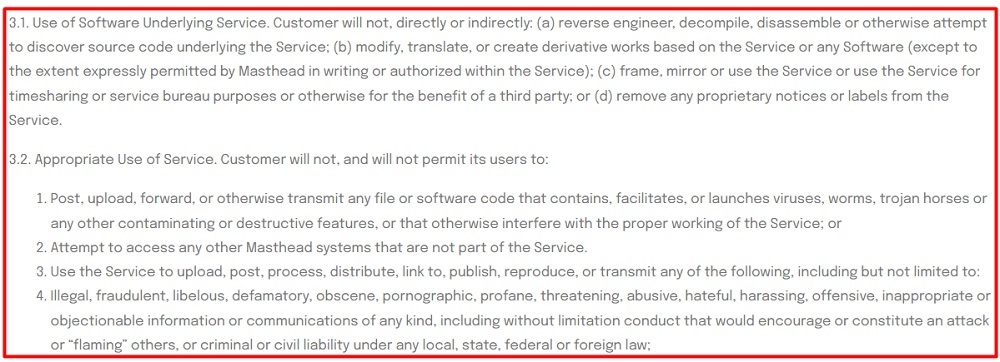
Payment Information
The payments clause should explain all fees or charges that users need to know about, and should provide information about your policies on refunds or credits.
SentinelOne's Master Subscription Agreement contains a Billing, Plan Modifications, and Payments clause that informs users about the fees, subscription increases, and taxes that they may be charged when using its services:
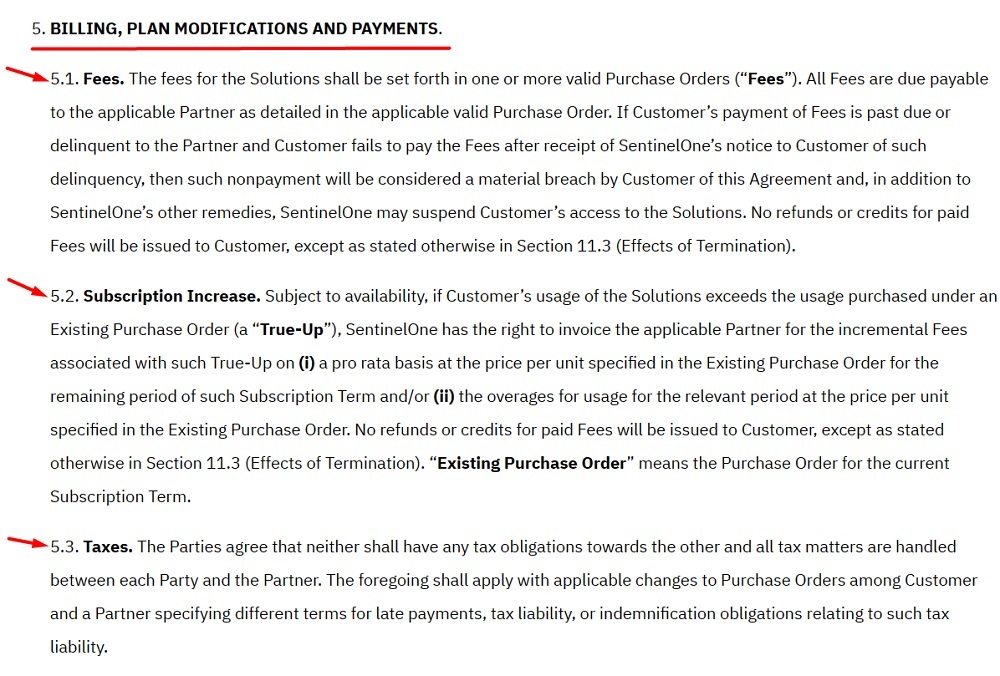
Privacy and Security
If you collect or process consumers' personal information, you should include a clause in your Master Subscription Agreement that lets consumers know how you handle their data. You can also add a link to your Privacy Policy to provide users with a complete description of your privacy practices.
The Protection and Security of Data section of Workday's Master Subscription Agreement describes the purposes for which it uses its customers' personal data, and lets consumers know that it uses a security program to protect the data that it collects, and that they can contact it with access requests:

Licensing Information
This clause grants consumers a temporary license to use your services, and can be used to explain any licensing limitations or restrictions.
Redocly's Subscription Agreement includes a Product Rights and Scope clause that grants users a non-exclusive personal use license that cannot be transferred or sublicensed, and covers account use restrictions:
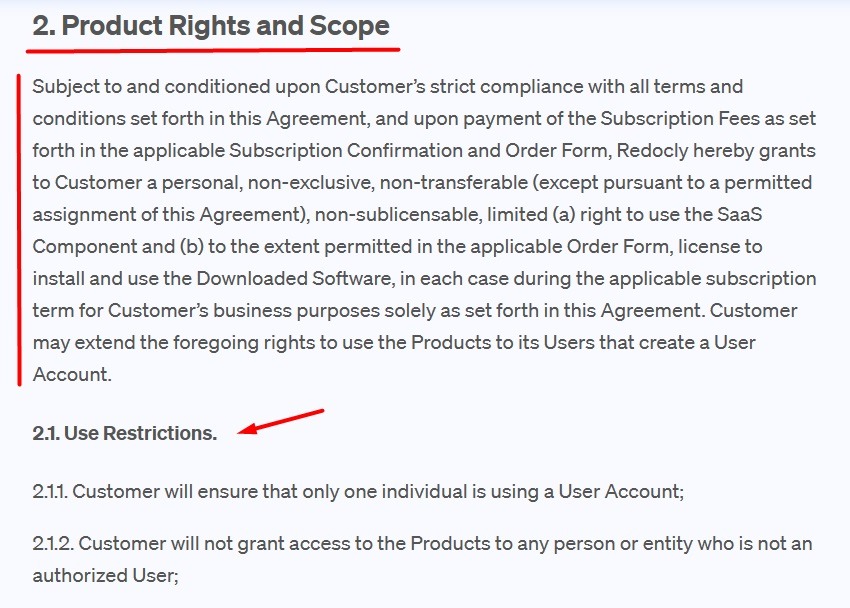
Third Party Information
You can use this clause to let users know whether you share any of their information with any third parties, as well as letting them know how you manage relationships between subscribers and third parties.
Brightly's Master Subscription Agreement contains a Third Party Interactions section that states that while it allows subscribers to interact with third parties when using its services, it is not responsible for any third party content or communications:

Intellectual Property
An intellectual property clause can help to explain to users that they do not obtain any degree of control over your service or any rights beyond what are stated in the Master Subscription Agreement when they become subscribers.
Zendesk's Intellectual Property Rights clause informs users that use of its services does not grant users any additional rights, and that its Intellectual Property Rights are owned solely by Zendesk:

Termination Information
You should use a termination clause to inform users how they can terminate their own accounts, and to let them know under what conditions you reserve the right to terminate their accounts.
You should also let users know what happens once their accounts are terminated, whether they will still have access or rights to any of your products or services, and whether they are eligible to receive any type of refund.
The Term and Termination clause in Axway's General Terms and Conditions for Subscription Services document includes sections describing how it or its customers can terminate the agreement due to financial incapability, how it provides refunds when customers terminate their accounts, and what each party's rights and responsibilities are upon termination:
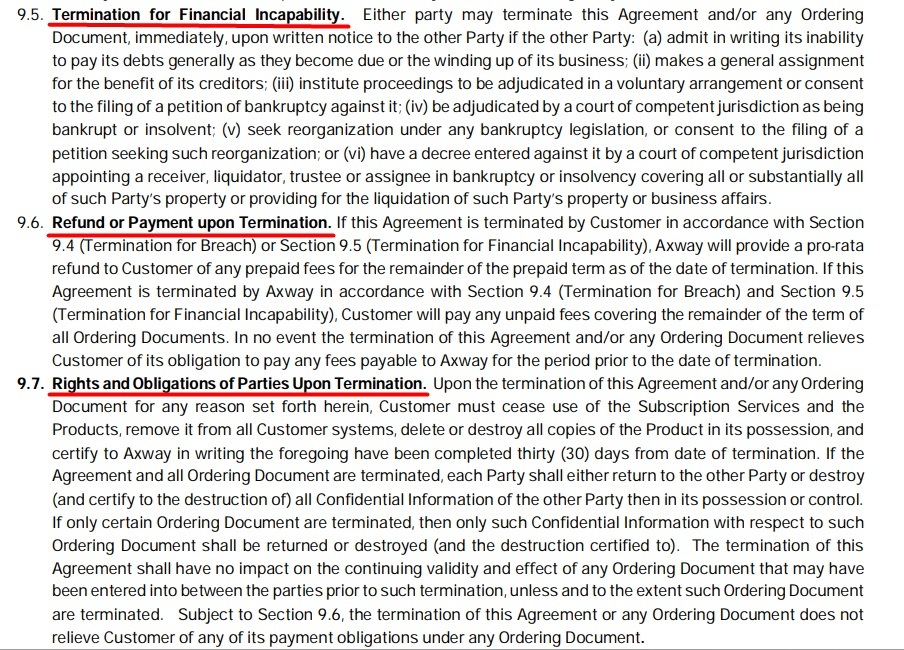
Limitation of Liability
A limitation of liability clause helps to provide your business with legal protection by informing users that you are not responsible for any damages or losses that may occur through the use of your services.
Redocly's Subscription Agreement contains a limitation of liability clause that lets users know that it and its affiliates, licensors, and service providers are not liable for any interruption of service, system failures, damages, or losses:
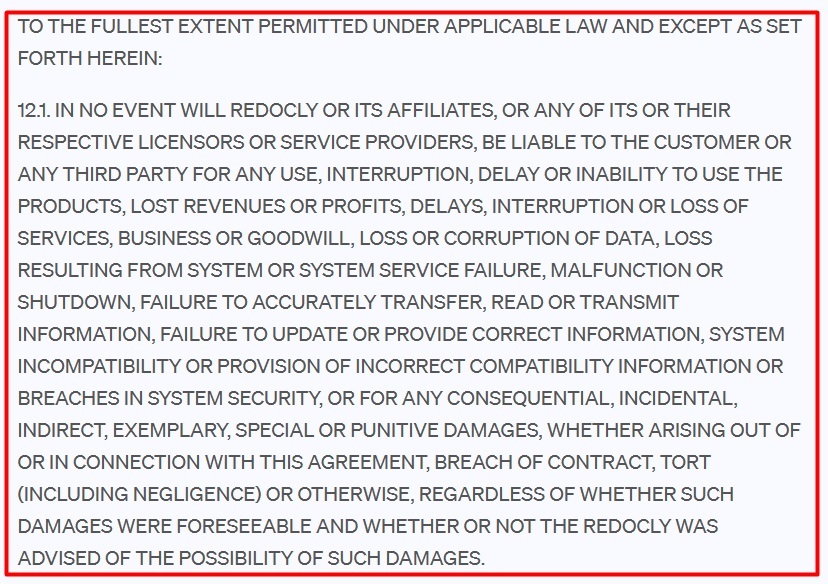
Disclaimer of Warranties
A disclaimer of warranties clause provides users with your warranty rules, as well as any exceptions to those rules, and can explain any steps you take to solve problems that users may come across when using your services.
The Limited Warranty and remedies in case of Defects section of Fieldwire's Subscription Agreement informs users that it will provide services as described in its Services Description, but that it does not offer any other warranties or guarantees for its services. It also lets customers know how to contact it about any defects, and informs them that it will either repair or replace any defects at its discretion:
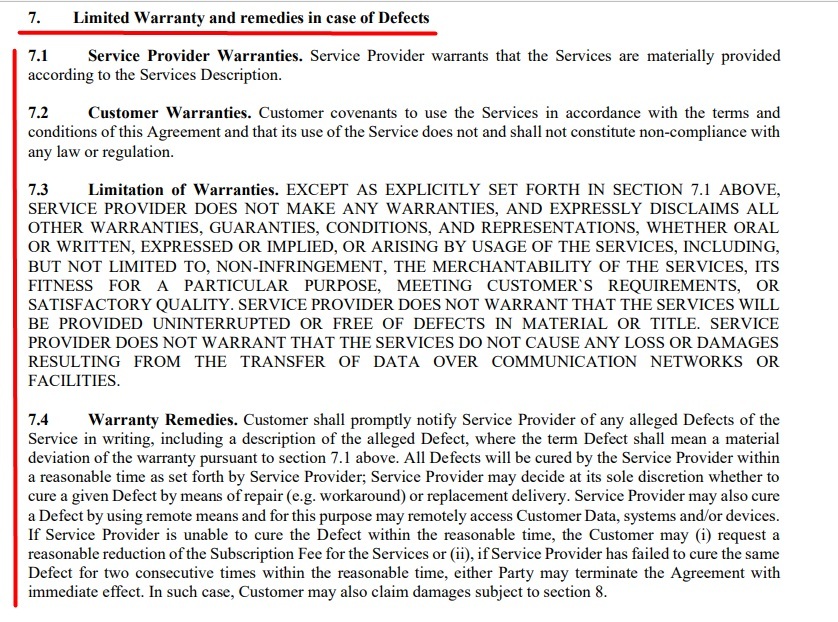
Free Trial Information
You can use a free trial clause to let users know how long their free trial lasts and what happens when their free trial ends. You should let users know what happens to their data after the trial, and whether they will automatically be charged for a subscription or whether they will need to sign up manually to continue with your service.
The Free Trials section of ZenDesk's Master Subscription Agreement includes a link to its Free Trial Terms and Conditions agreement:

When users click on the link, they are taken to ZenDesk's Free Trial Terms page, which describes the length of the free trial and lets users know that their data will not be saved unless they purchase a subscription during the trial:
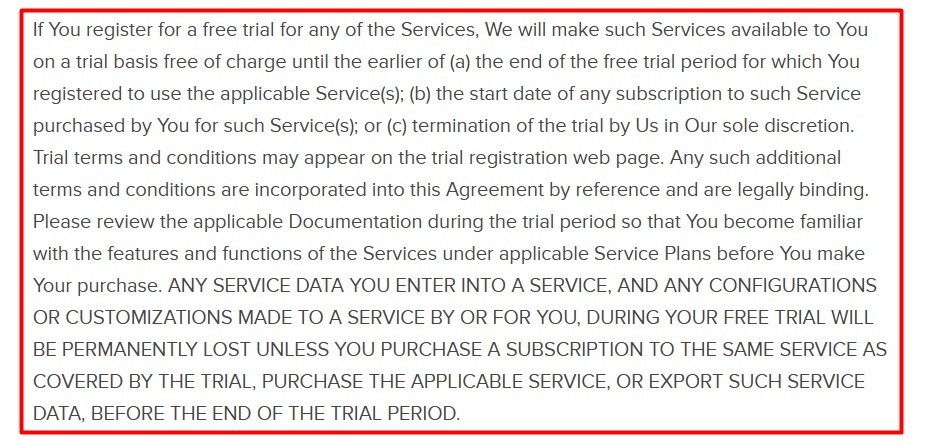
The specific content and details of these clauses will differ from business to business of course, and should always reflect your specific business practices. You may also need or want additional clauses, and some of these suggested clauses may not apply in every situation. For example, you may not offer free trials.
How to Display a Master Subscription Agreement

It's a good idea to keep a link to your Master Subscription Agreement in your website footer, as it is a static location that is visible from any page of your website, and most users intuitively browse to the bottom of a webpage to find its legal agreements.
Masthead's website footer includes links to its Changelog, Documentation and FAQ pages, and Privacy Policy alongside a link to its Master Subscription Agreement:
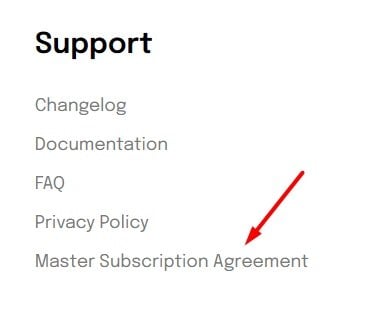
You can also display the link anywhere you would display other legal agreement links, such as the following:
- Download page for your software, mobile app, product, etc.
- Registration page for creating an account
- In an in-app menu, such as a Legal or Information menu
Getting Consent to Your Master Subscription Agreement

If you want your Master Subscription Agreement to be legally enforceable, then it's not enough to simply display your Master Subscription Agreement. You will need to make sure that users actually agree to it as well.
One of the easiest ways to get consent to your Master Subscription Agreement is to include a checkbox that users must tick before signing up to use your subscription services. For example, an "I Agree" checkbox is a great way to get consent.
When users go to create an account with Fieldwire, they must first tick a box stating that they agree to its Subscription Agreement and its Service Description:
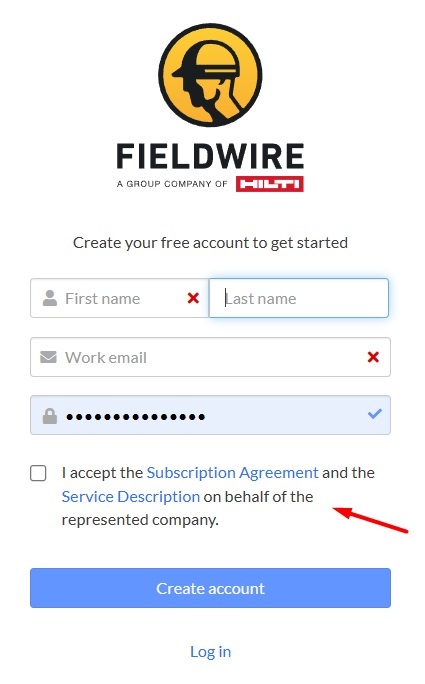
Summary
A Master Subscription Agreement is a legal document that outlines everything users need to know in order to use your subscription services. It typically includes clauses that explain how you treat user's personal information, what rights and responsibilities users have when using your services, and details about your payment processes, among others.
While there is no law stating that you need to have a Master Subscription Agreement, there are a number of benefits to having one, including keeping your users informed while legally protecting your business.
Having a Master Subscription Agreement can provide users with an easily accessible location where they can find all the information they need to know in order to use your services, and can help to give your company legal protection.
To write your own Master Subscription Agreement, you will need to make sure that it includes relevant clauses. Some of the clauses you should consider putting in your Master Subscription Agreement include:
- User requirements
- Payment information
- Privacy and security
- Licensing information
- Third party sharing
- Intellectual property
- Termination rights
- Limitation of liability
- Disclaimer of warranties
- Free trial information
Once your Master Subscription Agreement is written, you should be sure to display it somewhere your users can easily find it. Many businesses put links to their legal agreements within their website footers, as users can easily navigate to that area no matter what page of a website they may browse to.
It's important to make sure that users consent to your Master Subscription Agreement before using your services. One of the simplest ways to get consent is through the use of a checkbox that users must tick before signing up for your services.

Comprehensive compliance starts with a Privacy Policy.
Comply with the law with our agreements, policies, and consent banners. Everything is included.



